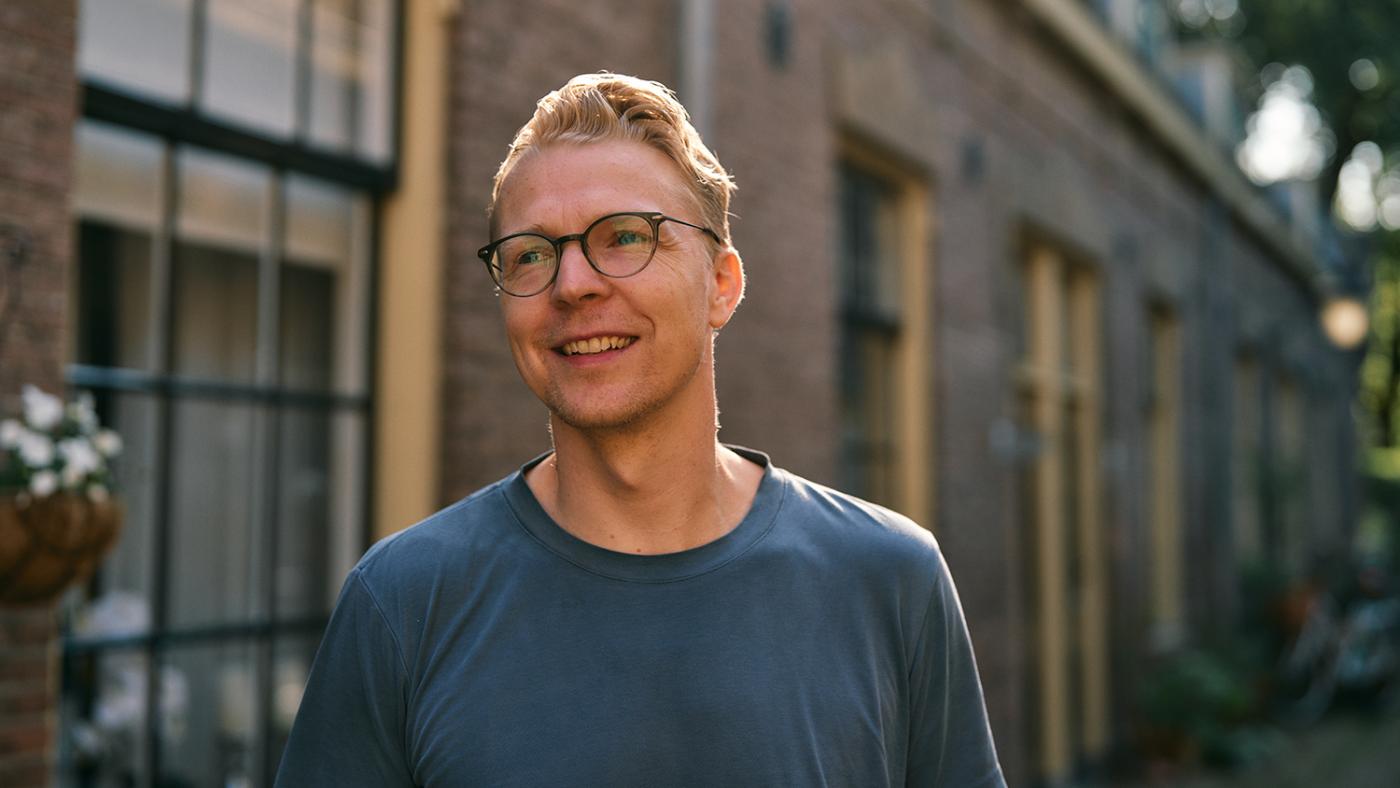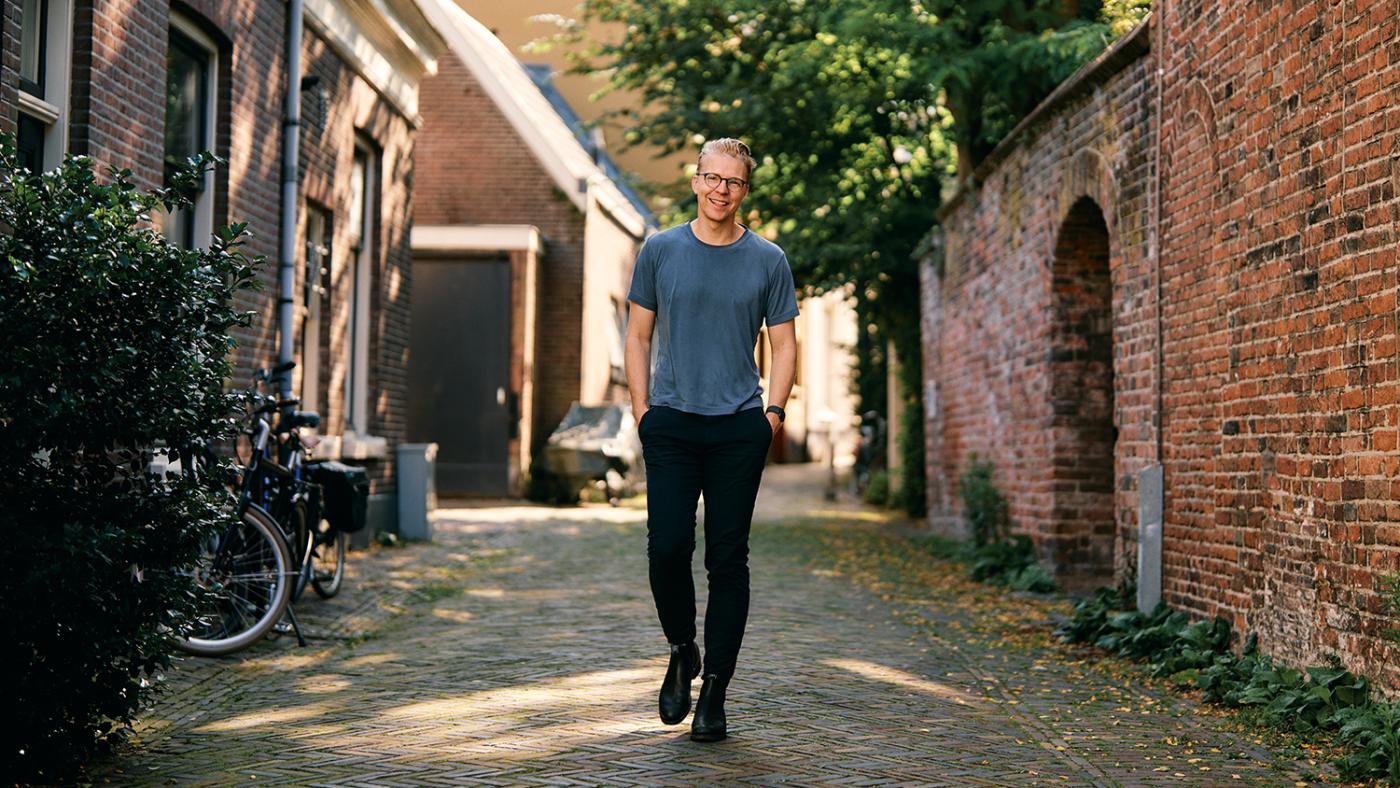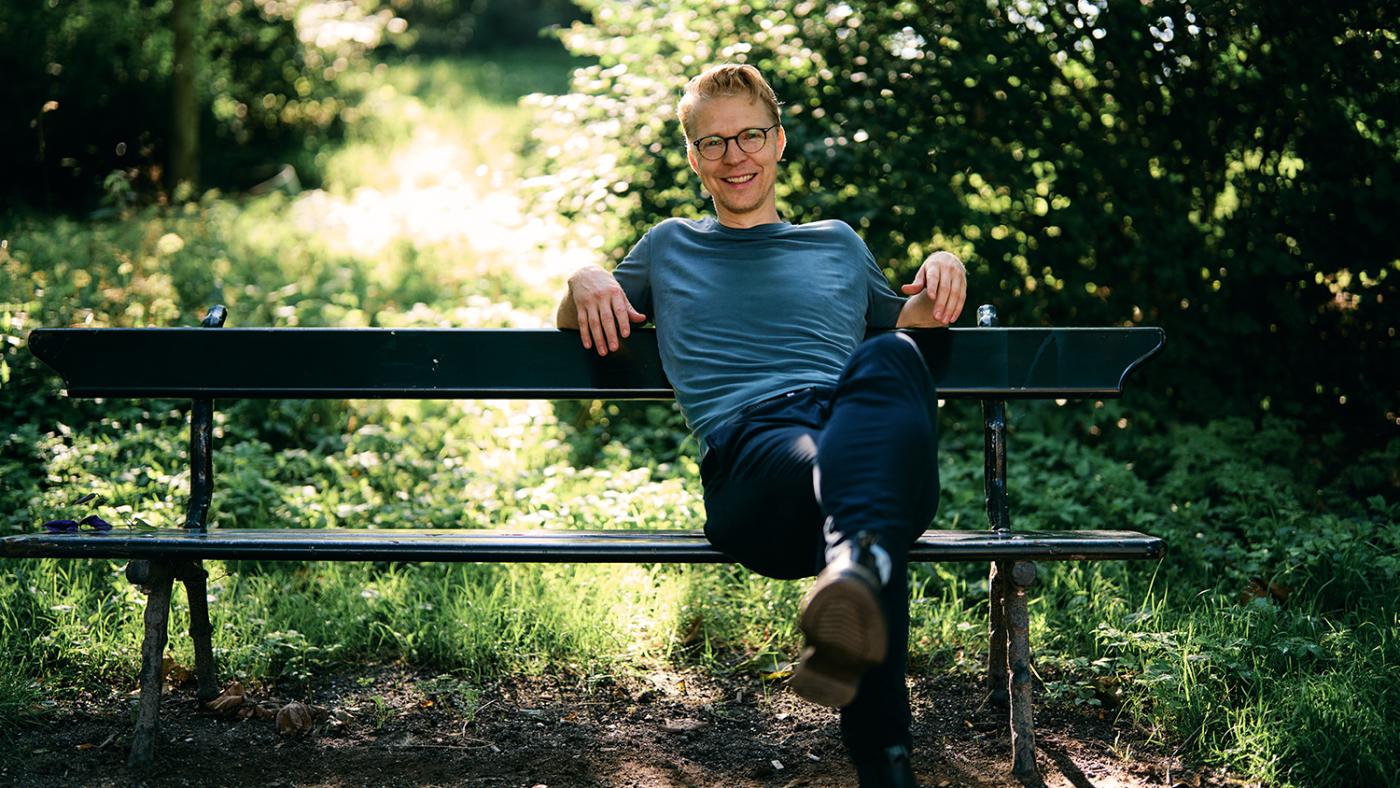Neuropsychologist and skater Beorn Nijhuis:
‘You can't always imagine yourself as a champion’

UU alumnus Beorn Nijenhuis (1984) became famous as a long-track speed skater. He participated in the 2006 Winter Olympics in Turin and set a Dutch record in the 1,000 meters in 2008. After his skating career, he studied at University College Utrecht to find out what he wanted to do after his top sports career. That was the first chapter of his academic career.
Positive contribution
Beorn Nijenhuis grew up in Canada, where he first got acquainted with speed skating. After moving to the Netherlands, he qualified for the 2005 Winter Olympics, which were held in Turin, after participating in the Dutch distance championships in Heerenveen for 500 and 1,000 metres. That same year, he came second and third in the World Championships in the 1,000 and 1,500 meters, respectively.
In 2010, Nijenhuis stopped skating professionally and decided to start a Bachelor's degree in Liberal Arts and Sciences at University College Utrecht. "After my career as a professional skater, I still had no idea what I wanted to do. That's why I chose University College Utrecht, where I was given the freedom to find out what interested me. I had a great time there, partly because of the motivated teachers, the interdisciplinary aspect of the programme, and the fun assignments we were given. For example, in collaboration with my supervisor, I was able to prove, in my Bachelor's thesis, that the starting position in skating and sports with a similar start is unfair. This evidence was later confirmed in other studies."
Nijenhuis explained to DUB in an article from 2014 (in Dutch only, Ed.) that this is a false start because the starter in skating does not always wait the same amount of time to give the starting signal after the word "ready." This varies per pair. How long athletes must wait can determine when, how and how quickly they begin to move at the start. Such differences in the waiting time are not fair. He enjoyed the opportunity to use his background as a top athlete in his studies.

Photos: Brendon Heinst
Sway foot
The search for that combination did not stop after obtaining his Bachelor's degree and completing his Master's degree in Neuroscience and Cognition. His PhD research at the University of Groningen was about sway foot, a condition in which muscles contract uncontrollably. It can occur to anyone, from doctors to fishermen. Sway foot is particularly well-known in the skating sport. It meant the end of Gerard Kempers' career, for example.
For a long time, the cause of this condition remained a mystery. "Thanks to my PhD research, I was able to prove that sway foot is a neurological condition," says Nijenhuis. "It is not something medical, but rather a problem that starts in the brain. It is a malfunction in the motor system. The brain is no longer able to control the skater's foot correctly."

Top sport
After his groundbreaking PhD research, Beorn started working part-time as a teacher and researcher at the Conservatory of Amsterdam. For several years, he has been teaching musicians about how their brain works and how they can best use that knowledge to perform at the highest level.
Nijenhuis: “Six years ago, I was offered a job to teach several courses in Neuroscience. It is about delivering top performances, such as a difficult piano concerto. With my background as a neuroscientist and former professional athlete, I know how the brain works and how you can best deal with stress and the pressure to perform. Making music and performing are very similar to top sport in that respect.”

Three overlapping circles
Everything Beorn does and undertakes has to do with society and science. That's how he combines the skills acquired as a former athlete and as a current academic. When helping musicians deal with stress and performance pressure, he uses his knowledge as a scientist and his experience as a former top athlete. Nijenhuis: “If you draw three circles, where circle one represents society, circle two represents science and circle three is about yourself, I try – with everything I do and undertake – to occupy myself with the area where the three circles overlap.”
“Still so much to investigate”
However, there is a downside to the versatility of talents and interests of this jack-of-all-trades. For example, it causes quite a few social obstacles in Nijenhuis’ daily life. “As a former Olympic skater with a PhD in Neuroscience, or rather, as the only former Olympic skater with a PhD in Neuroscience, it is often difficult for society to appreciate both my top-level sports and academic achievements. What I do cannot be easily pigeonholed. I am either seen as a former athlete or as an academic, but I am both. People do not always see it that way. Sometimes, I have a hard time with that.”
But Beorn does not leave it at that. “I keep looking for opportunities and subjects where the three overlapping areas are strongly evident. Hopefully, I can contribute something to society in the future by combining my knowledge as a neuroscientist and my top-level sports experiences. And perhaps others will see that it can be valuable to be both a former Olympic skater and an academic. In any case, there is still plenty to do and so much to research, so I will not sit still.”
About Beorn Nijenhuis
Beorn Nijenhuis completed his Bachelor's degree at University College Utrecht in 2013 and his Master's degree in Neuroscience and Cognition at Utrecht University in 2016. In 2013, he obtained a PhD research in Neuropsychology at the University of Groningen. He currently teaches about the brain and performing under pressure at the Conservatory of Amsterdam.
This article was written in collaboration with the alumni magazine Illuster. You can read all articles from the latest edition of Illuster here.